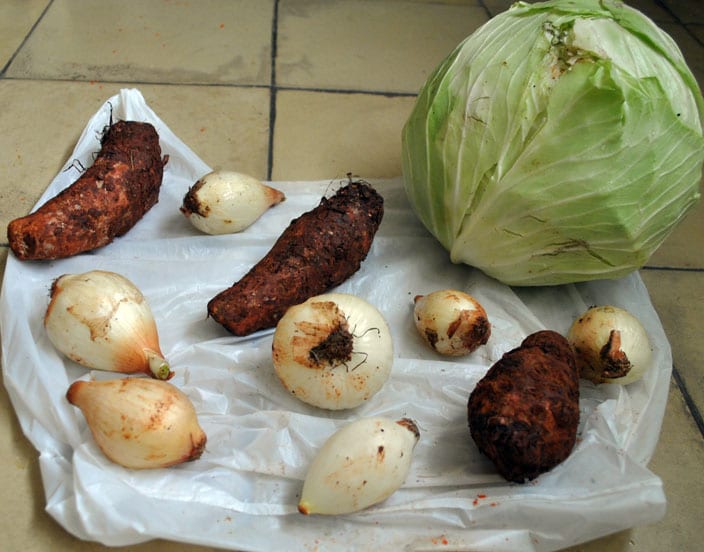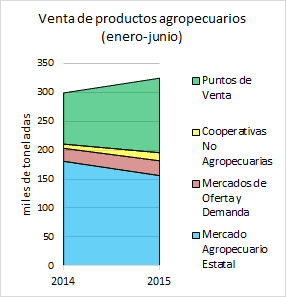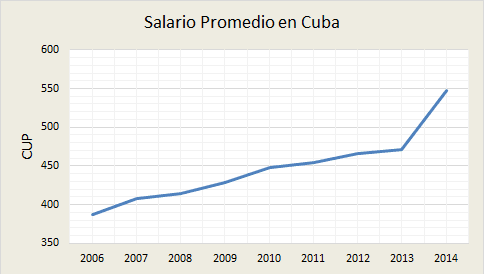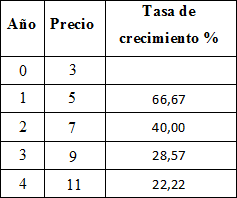Cuba Food Prices: A Look at a Journalist’s Predictions
Erasmo Calzadilla

In October of 2014, Cuba’s official newspaper Juventud Rebelde published an article dealing with the state of Cuba’s produce and livestock markets. The author, journalist Rene Tamayo, appeared overjoyed at the deceleration of price trends and predicted a brighter future all around.
Background
For the average, humble and hard-working Cuban, buying food has become a true headache – not because there are product shortages, but because of prices, or so my grandmother claims.
Some chalk up rising prices to low production yields, others to growing demand and nearly everyone suspects that intermediaries are walking away with a juicy cut of the profits.
Between 2012 and 2013, the average price of produce grown domestically rose by 20 percent (a tough blow to families). The following year, prices rose considerably less, by only 4 percent. This is the context where Tamayo’s optimistic articles made their appearance, to claim that prices would continue to go down thanks to the measures implemented by the reforms tsar, Marino Murillo. The elimination of bureaucratic hurdles, intermediaries and other obstacles would allow farmers to produce and earn more, and buyers to get their hands on cheaper products.
This post aims to determine whether, one year later, Tamayo’s predictions have actually come true. These, to sum up, consisted in: a rise in the production of fruits, vegetables, root vegetables and meat, to the point of fully satisfying demand, a rise in wages that would make these products affordable and a general drop in prices. Let us tackle each separately.
Farm and Livestock Production
The following graph plots the sale of products at produce and livestock markets between the months of January and June.*

According to data from the National Statistics Bureau (ONE), the number of tons of products sold increased considerably from last year to the present (at a 9 percent rate). If we were to assume this was the result of increased production, we could say the first of Tamayo’s prophecies were being fulfilled.
But let us not overlook an important detail. The number of tons of products sold went down at State markets, where prices are regulated, and rose dramatically at “free” markets. In other words, what we are seeing is a shift towards capitalist relations of production and exchange. Will this benefit the people? We’ll tackle that at the end.
Wage Increases
From 2006 to 2014, Cuba’s average salary went up by 12 Cuban pesos (half a US dollar) a year. Last year, however, something unprecedented happened: the average salary went up by 77 pesos (a little over three dollars)!

We haven’t received any similar news in 2015. The process is likely to continue, slowly but surely, at the rate of half a dollar every year. This is absolutely ridiculous if we compare it to the accelerated rise in the cost of living and basic food products.
To have an idea of the situation, Tamayo was happy that product prices had only risen by 4 percent in the course of a year. Well, for over a decade, Cuba’s average salary has been going up at a pace of 3 percent every year. If we continue down this road, we will be increasingly poor, even as we begin to earn more and more, just as Marx predicted in Das Kapital.
We would have to wait for this year’s statistics, but it’s more than clear that the prediction that a rise in wages would make food products affordable won’t turn out to be accurate. Journalists, who keep this system running with their half-truths, have been asking for a raise that hasn’t come in years. If I were Raul Castro, I would look into getting them that raise.
A Drop in Food Prices
What became of prices, finally?
The data is contradictory. According to calculations conducted on the basis of the ONE report, last year we paid 4,400 pesos per ton of food, while, this year, the figure went down to 4,160 pesos – 240 pesos less. Is this accurate?
The above figure contradicts other data supplied by the National Statistics Bureau itself, and with my experiences as a buyer.
In the first graph presented in this post, we can appreciate that, from 2014 to 2015, sales dropped there where prices are low (and products either go missing or are of poor quality), and went up a lot at the more expensive markets.
How can this shift, from the controled to the “free” market, result in a drop in the price paid for every ton of food? Someone’s lying here. Who might it be? To answer this question, let’s go grocery shopping.
Alamar is a large low-income neighborhood located some ten kilometers from downtown Havana. This is where I live. Yesterday, I went past the “free” produce and livestock market and bought a medium-sized cabbage at 15 pesos, a pound of cassava at 6.50 pesos and a pound of onions at 22 pesos. I bought these products to compare their prices with last year’s.
At the close of 2014, some commentators retorted to Tamayo: “What price deceleration are you speaking of, when cabagge costs 10 pesos the piece, a pound of cassava costs 5 and one of onions 18 pesos?” That’s where I got my data from.**
 In twelve months, several high-demand products have gone up by one to five pesos each. Was there price deceleration or not?
In twelve months, several high-demand products have gone up by one to five pesos each. Was there price deceleration or not?
If the journalist were to take up the matter again, he could say that, as he had predicted a year before, price deceleration actually continued. This is technically true, but it comes across as mathematical trickery more than anything.
Let us make use of a didactic example. If the price of a given product is 3 pesos the pound, and this price goes up by a fixed amount every year, its growth rate would be considered “decelerated.” The following graph can help us understand this more clearly.

From this perspective, it seems as though things are improving, but it isn’t true. What we are actually seeing is the linear growth of food prices – as linear as the raise in wages, but at a steeper angle.
To conclude, did Tamayo’s predictions come true? I leave the answer to you.
Conclusion
In October of 2014, Tamayo published a report in a national newspaper saying that the main problems facing Cuban families were going to be left behind thanks to Murillo’s measures. A year later, things actually look worse.
Farm and livestock production has increased, but demand continues to grow thanks to tourism and private businesses. More sales are made, but at offer and demand markets. Wages have gone up, but at a slower pace than prices. In short, food products are today less affordable than they were a year ago.
Notes:
* The volume of sales illustrated in graph 1 excludes eggs, meats and products sold by street vendors.
** Summary of data and ideas contained in the comments.





